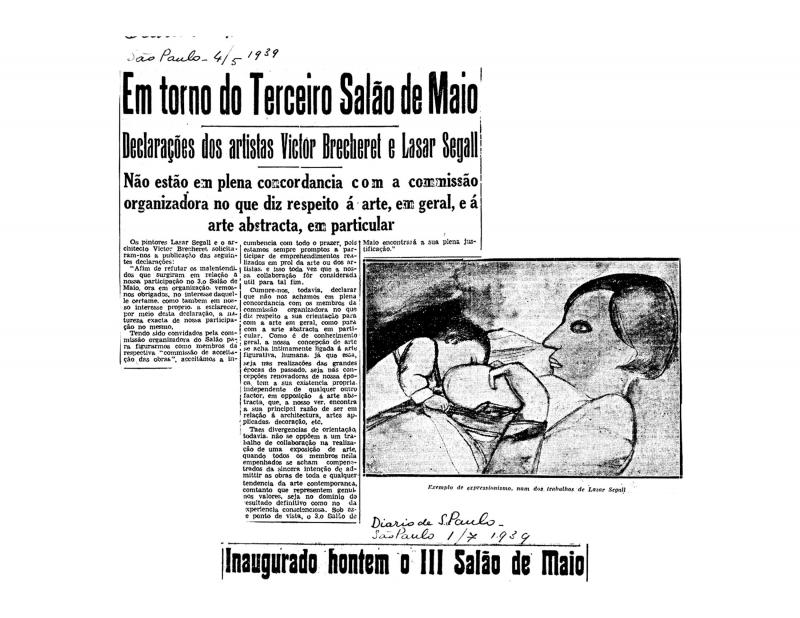This essay is by the Belgian art critic Léon Degand, who was a contributor to the magazine Art d’aujourd’hui and was a strong supporter of the Abstract art that began to appear in Parisian galleries after the Second World War. He arrived in France in 1945 and began publishing articles and reviews in Les Lettres françaises, the magazine edited by the poet Louis Aragon. Degand’s book, Chagall: peintures (1942?45) brought him a certain international recognition. His prestige led to his appointment as director of the MAM-SP (Museu de Arte Moderna de São Paulo), a position he held from 1947 to 1951, when “Ciccillo” Matarazzo nominated him to take charge of the Primeira Bienal de São Paulo (1951).
In his essay, Degand discusses the development of an “awareness” of the autonomy of art among the artists who emerged after the Impressionist period. According to Degand, the concept of a kind of painting “for its own sake” that is “under no obligation to be anything but a painting,” reached its peak in Abstract art, in which form and color no longer refer to how things look in the “outer world.” He believes that Abstract painters, like musicians and architects, “use only the elements that are inherent to their art.” Following the path of modern art history, Degand attempts to explain “what Abstraction is” in terms of “the laws” of Figurative painting. He believes that, on the one hand there is a connection at certain levels between the model and the subject, and on the other there is visual expression. To illustrate his point he refers to Paul Cézanne’s “la petite sensation” and to the “freedom of the viewer” who looks at paintings by Wassily Kandinsky, Paul Klee, Alfred Manessier, and so on. Taking care not to attribute any “superiority” to Figuration or to Abstraction, Degand claims to be above “any type of sectarianism.”
In regard to the debate between Realism and Abstraction, there is an article published in the Diário da Noite in which the sculptor Victor Brecheret and the painter Lasar Segall express their opinions in support of the “human” figure: “Em torno do Terceiro Salão de Maio” [doc. no. 1085032].

